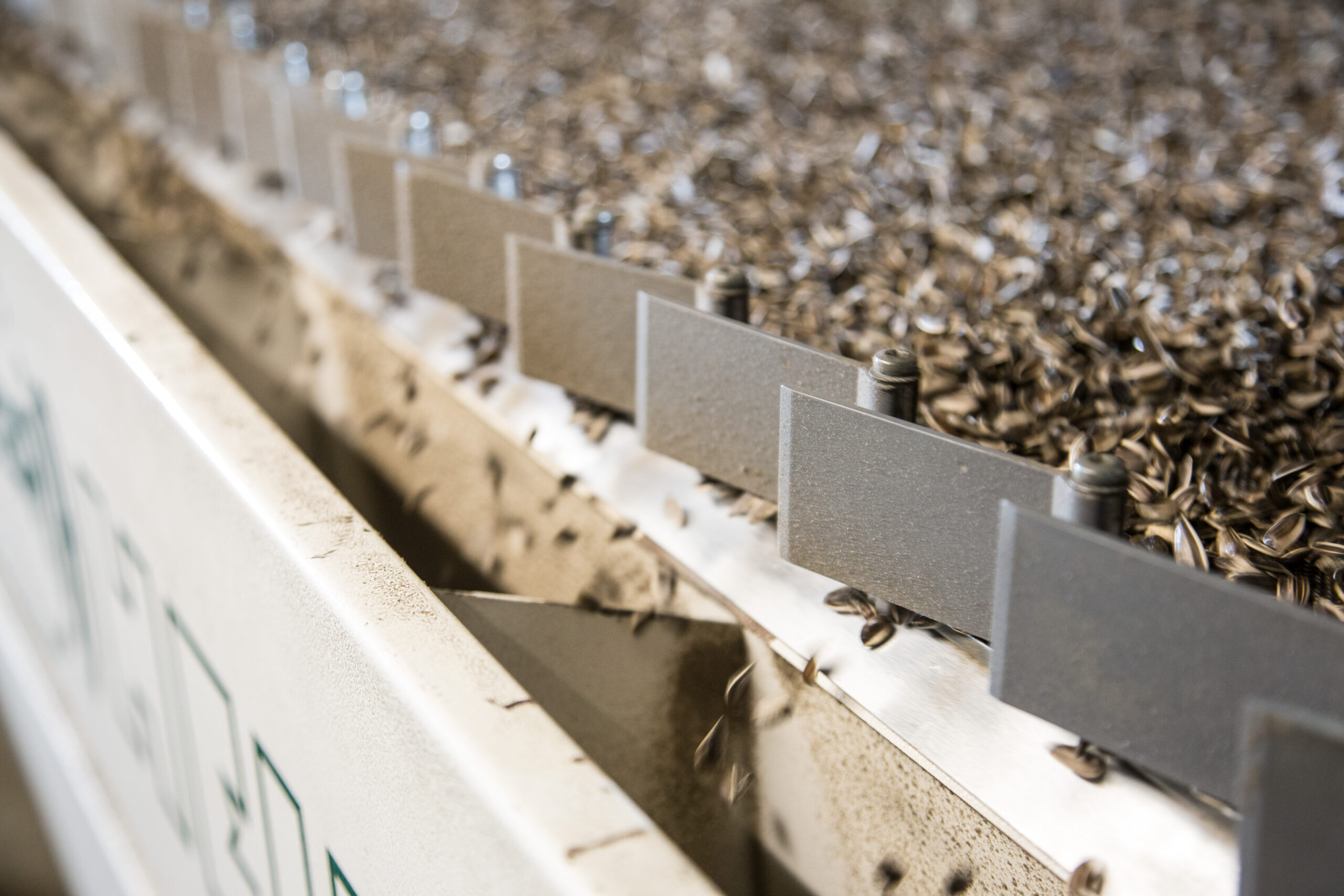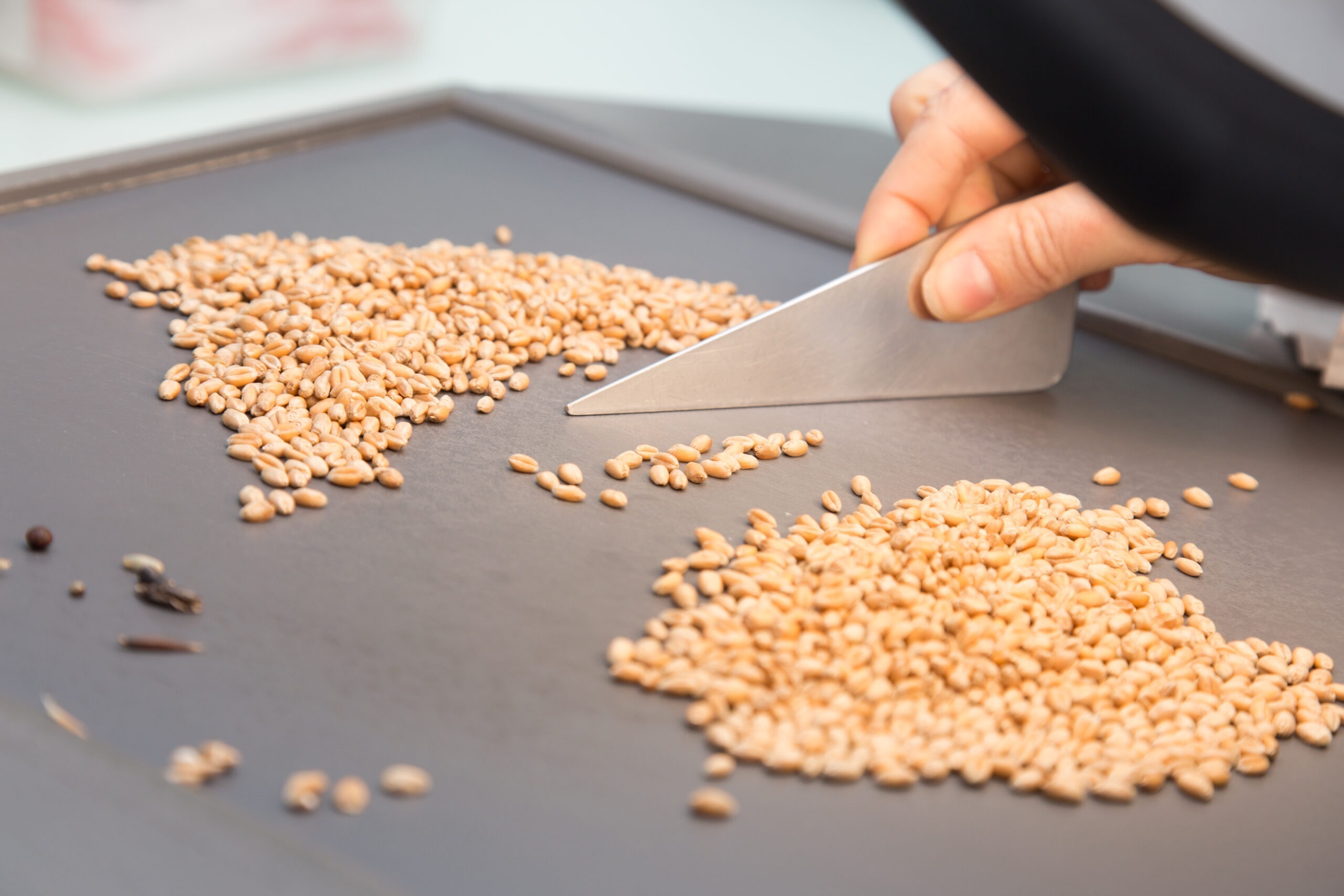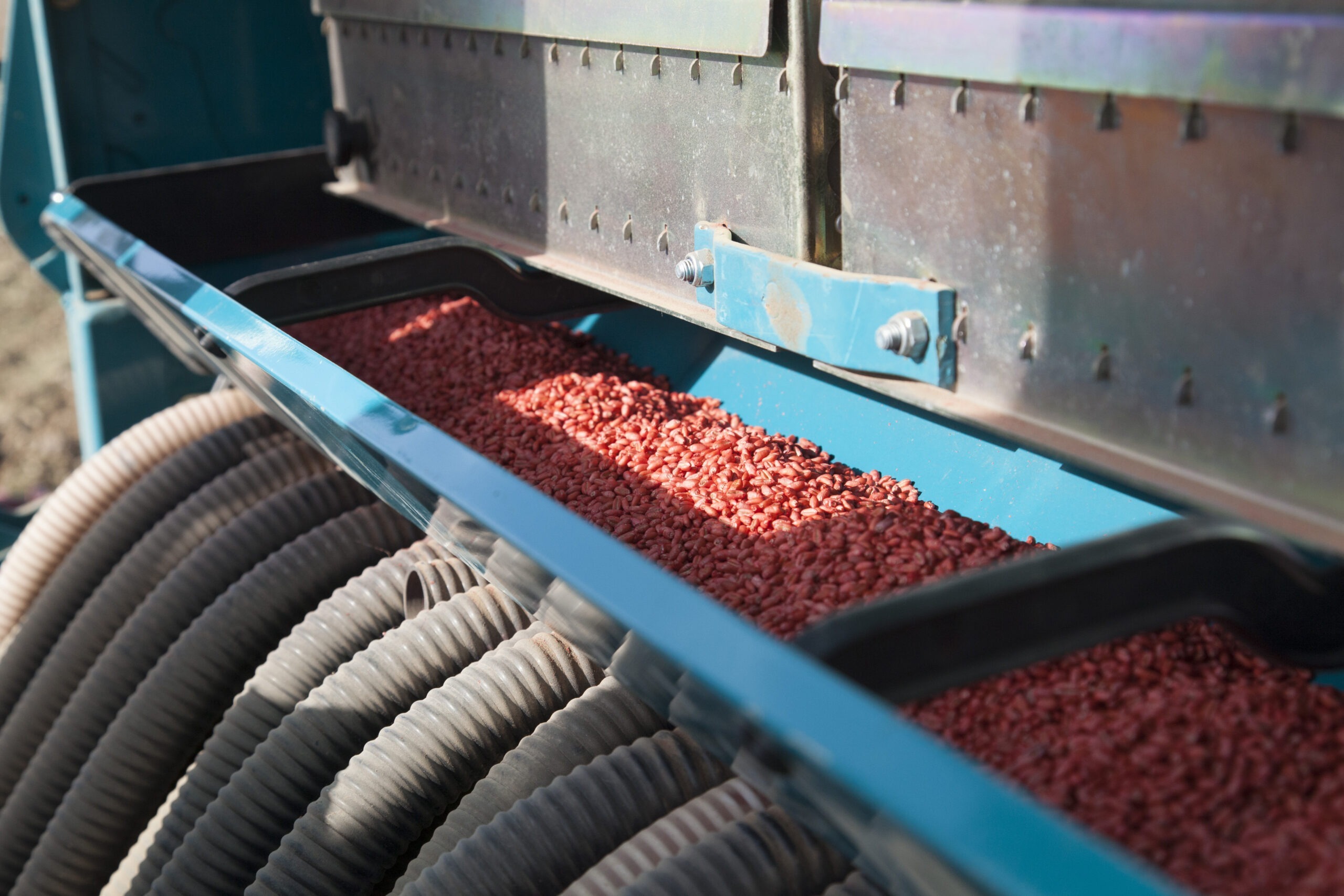Back to mapClose


 See more
See more
The manufacturing process

From unprocessed seed to marketed seed
Seed production involves cleaning, sorting, processing, packaging, and quality control for marketing. Each step aims to ensure that the seeds meet the required quality standards.
6,000
Jobs in seed production in 250 seed production plants in the territories.
Seed processing plants
A seed processing plant relies on a combination of different machines for removing seeds that will not produce good crops as well as foreign seeds. These machines rely on the physical properties of the seeds (shape, density, colour) to sort and separate them. This requires numerous adjustments, and only the expertise of highly qualified and experienced operators can achieve an optimized result.
The choice of specific and complementary tools adapted to the needs of each batch of seeds aims to ultimately obtain a batch that complies with marketing standards in terms of health quality, specific and varietal purity, but also germination capacity. The activity of the seed processing plant is seasonal, given the need to adapt to the cycle of seed-bearing crops, where harvests generally take place during the summer months. Production must then be paced according to the sowing periods of the different species.
Depending on the species, seeds have different characteristics of length, width, thickness, weight, volume, roughness, etc. It is the knowledge of these differences that the manager of a seed processing plant will use to separate and eliminate foreign seeds and diseased or abnormal grains from a batch of raw seeds. At each stage of the process, analyses are carried out to guide the choice and adjustment of the equipment.

The different stages of sorting
The person in charge of the seed processing plant must remove from a batch of seeds any waste that would hinder regular sowing (straw, stones, soil), weed seeds and grains that are unable to germinate (broken, parasitized, scalded, sprouted); regardless of the year and the growing conditions that could have disrupted the weeding schedule or encouraged the development of weeds.
To achieve this, a whole series of specialized equipment, combined with the expertise of seed processing plant operators, allows this transformation to be carried out and ensures a high level of quality, often exceeding official standards. Once cleaned and sorted, the seeds are often treated to protect them from diseases and parasites when they are planted by users. The seeds are then packaged in sealed and labelled packages to provide all the useful regulatory information to users. For agricultural species, these different stages of production and quality control are subject to certification and official controls by the Quality and Official Control Department (DQCO) of SEMAE.
Analyse purity and germination capacity
After the various sorting operations, the quality laboratory of a seed processing plant carries out different analyses to ensure that the seeds meet European certification requirements. The role of the laboratory is to verify, at the end of the sorting process, that the batch of seeds meets the strict requirements in terms of germination capacity, health quality, specific and varietal purity, guaranteeing farmers quality seeds.

Seed treatment
Seed treatment helps control diseases carried by seeds and protects young plants from pests naturally present in the soil. It also provides protection against early attacks of diseases and pests in vegetation, eliminating the need for crop spray treatments. Seed treatments remain essential for certain diseases and pests for which other control methods are non-existent, only partially effective, or difficult to implement.
The choice of the active substance(s) (mode and spectrum of action, persistence, etc.) takes into account the parasites specific to each species, the resistance profile of the variety, but also the parasites existing in the area where the seeds will be used. For the same species and the same variety, different treatments can be carried out in order to offer a range adapted to different growing conditions. Seed treatment in seed processing plants uses tools to limit contact with the products and precise dosages to ensure uniform application at the authorized dose. These products are used in closed circuits with waste management to avoid any contamination in the environment.

Precise and reasoned use
Treatment products are effective at very low doses: 2 to 4 litres of active ingredients per ton of seeds. In total, this represents only a few grams of active ingredients per ton of end product. The regulations aim to ensure the product's safety for the user, the consumer, and the environment under the recommended conditions of use.













